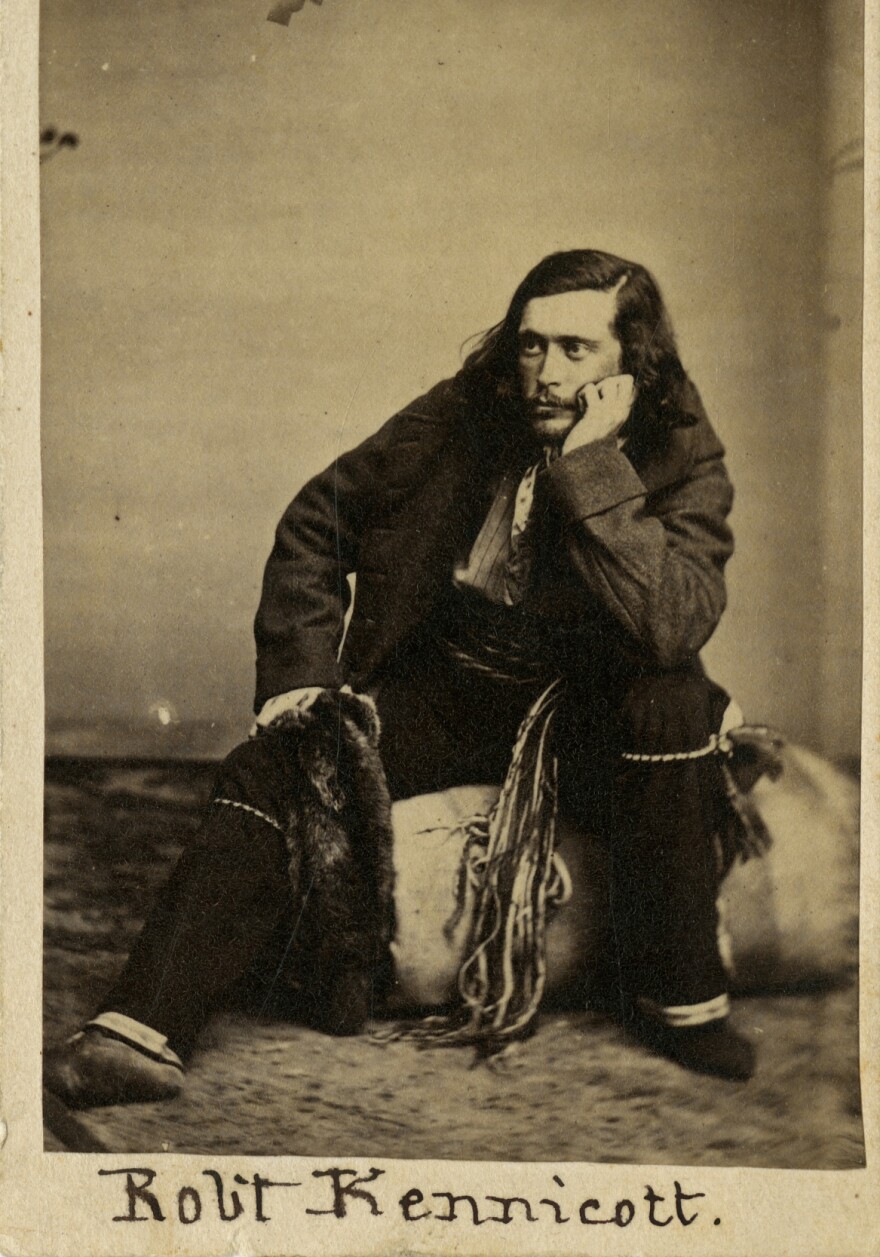In 1852, the Smithsonian was only 6 years old when curators started receiving specimens of frogs and birds from a teenager in Illinois.
That teenager's name was Robert Kennicott. He went on to become an accomplished naturalist and herpetologist and contributed hundreds of pieces to the Smithsonian during his life.

"He basically collected things that are in all of our departments," said Gene Hunt, a curator and paleontologist at the Smithsonian Institution. "He sort of pulls together all the departments of our museum, in one person."
Kennicott's story is actually a tragic one. He died at the age of 30, and for the past 150 years, the most logical deduction anyone had made was suicide. But now, the Smithsonian has solved the mystery — and Kennicott himself has become part of their collection.
Back in 1866, one of Kennicott's expeditions took him as far west as the Alaskan wilderness. He left camp early one morning but never returned for breakfast.
His colleagues went to look for him. When they found him, he was lying on the shoreline of the Yukon River, according to Doug Owsley, a forensic anthropologist at the Smithsonian National Museum of Natural History.
"The broad brim of his hat was resting against his forehead, and one of the things they noticed was that there was foaming around the mouth," Owsley said.
Kennicott carried a small vial of strychnine — a poison often used as pesticide, which he'd use on small animals he might want to preserve and collect — but it wasn't with him. So his colleagues figured he'd thrown the strychnine into the river after he'd taken a fatal dose.
That story started making its way into the history books, but it didn't make sense to the people who knew Kennicott or studied his life. By all accounts, Kennicott was a vivacious person who loved what he did.
"I think of him as a whirlwind," said Steve Swanson, director of the Grove National Historic Landmark, the site where Kennicott grew up. "He'd come into a room, he'd never sit down, he would tell his whole story, he'd be moving and gesturing all the time."

Swanson asked a team at the Smithsonian to dig up Kennicott's body. The team analyzed Kennicott's hair, his bones and his tissues. They also dug into his childhood records.
They found that there wasn't enough strychnine in his bones to justify the suicide hypothesis, and accounts of Kennicott's childhood fainting spells and other evidence led them to conclude that he actually suffered from heart disease.
But Kennicott's story isn't over — and in a way, he's now been resurrected. His bones are now on display at a new exhibit at the Smithsonian National Museum of Natural History. The collector has been collected.
When Steve Swanson saw the exhibit for the first time, it felt like the perfect final chapter.
"I thought to myself, 'God, that's right,'" Swanson said. "Kennicott, God bless him, [he] has come back. And he's come back to the Smithsonian, which was so dear to his heart."
Copyright 2022 NPR. To see more, visit https://www.npr.org.



